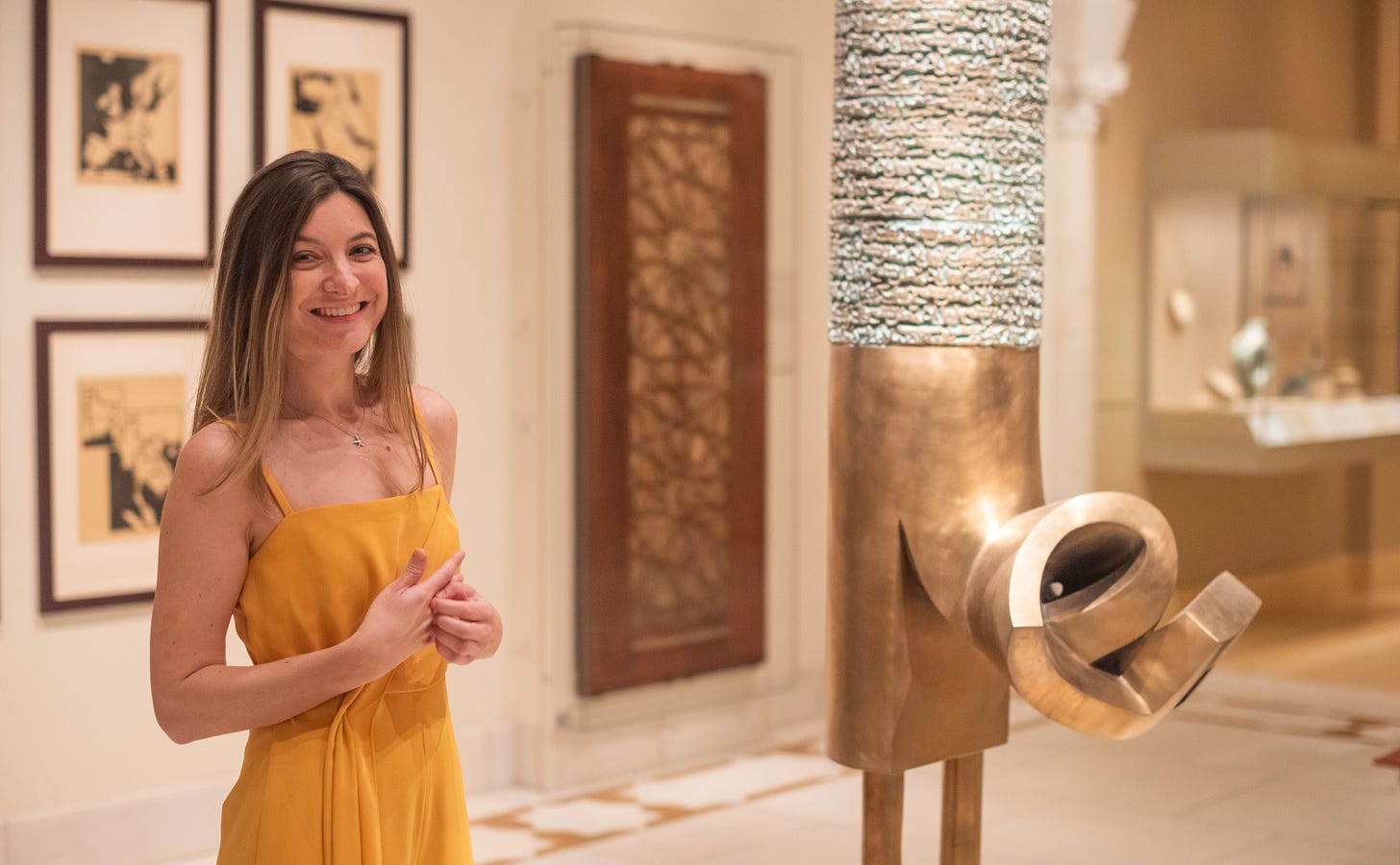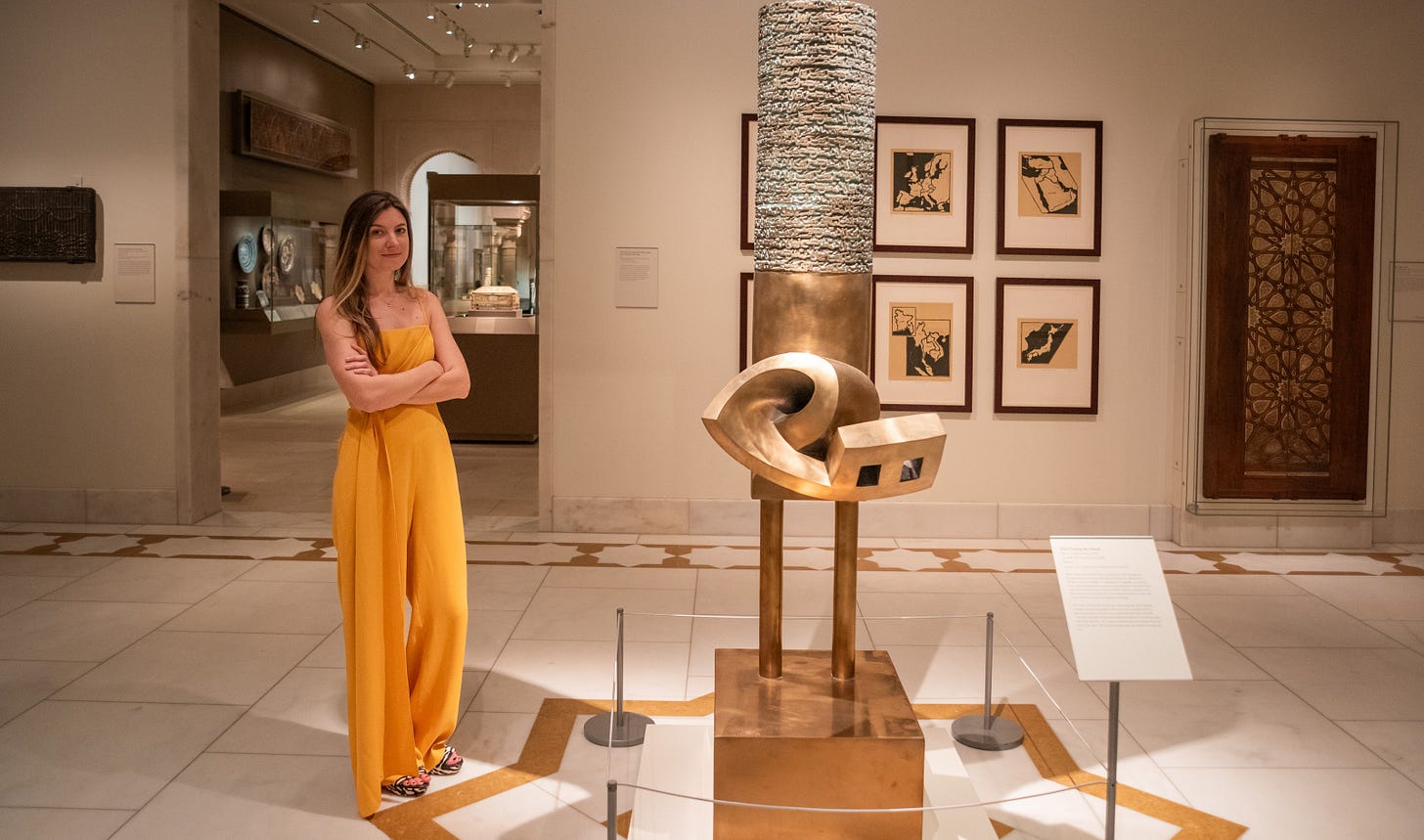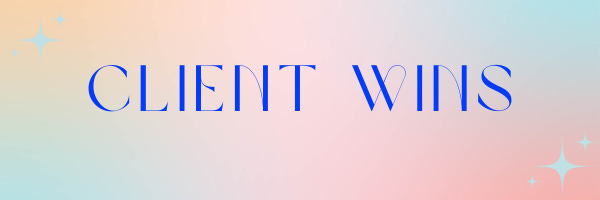
“The only winning move is not to play.” I was thinking of this line, from the 1980s film WarGames, when I saw Iranian sculptor Parviz Tanavoli’s Poet Turning into Heech (2007), on view at the Metropolitan Museum of Art in New York City.
Poet Turning into Heech is a large bronze sculpture featuring a cylindrical top covered in writing that is meant to signify Persian poetry. The writing is bluish-teal and oxidized-looking. As the sculpture descends to the floor, the mass of poetry transforms into one sleek, buoyant word, with a life and movement all its own. That word is heech, which in Farsi means “nothingness” or “emptiness.”
Considered the father of modern Iranian sculpture, Parviz Tanavoli has made, by his own estimation, thousands of heeches. They come in a variety of sizes as well as forms, from fiberglass to neon and various metals. The first heech I ever saw in-person was a massive, shiny stainless steel installation outside the Aga Khan Museum in Toronto. Gazing at this friendly, pretty object underneath cloudless blue skies, I had felt hopeful. Only about 130 million people around the world speak Farsi, yet somehow viewers across cultures can understand that these sculptures are reaching out to them with goodwill and quiet enthusiasm.
At almost 90 years old, Parviz Tanavoli has enjoyed a long career that has spanned not only sculpting but also weaving, painting, printmaking, manuscript illuminating, and even scholarly writing. I was charmed to uncover Tanavoli’s peer-reviewed research, published in the journal Iranian Studies, on obscure tribal storage bags.
When we think about Parviz Tanavoli, it is important to grasp that this is a person who is deeply passionate about a huge variety of artistic expression in Iran. He witnesses that art in places most people would overlook. Tanavoli is a person who has gotten as close to the ground as he can—for instance, dealing with tribal weavers to execute his vision for a rug—in order to make and experience Iranian art. He appreciates the art of everyday life—buttons, talismans, beads, religious devotional materials, and other tchotchkes. Tanavoli was a locksmith as a child, so locks figure prominently into his work. He also loves lions—an animal historically associated with Iran—and I am partial to his stunning lion artworks.
The arts and crafts of everyday life deserve recognition and elevation. Tanavoli was one of the founders of Iran’s Saqqakhaneh School, a 1960s-era movement that attempted to marry modern art with traditional Iranian artistic modes and themes. These artists wanted to articulate their modern works through the lenses and tools of Iranian decorative arts. Calling the Saqqakhaneh movement one of “so-called neo-traditionalism,” scholar Hamid Keshmirshekan notes that this art “also involves the legitimization of a claim to authority over the future by those artists who interpret the values of the past.”
A saqqa-khaneh, for which the school is named, is a public water-drinking source where Shi’ite martyrs are also honored. These shrines are often covered with devotional objects and items like locks—exactly the same materials that enchanted Tanavoli and other Saqqakhaneh School artists. These artists were engaging with religion not from a theocratic or ideological point of view, but rather with a certain fondness and appreciation. The art is not overly reverent, but it’s also not really nostalgic. Keshmirshekan explains, “The atmosphere of the paintings was religious though not as lofty, grand, or spacious as some of the distinguished Iranian mosques, but as familiar and intimate as that of the traditional Saqqa-khaneh.”
Keshmirshekan says that Iranian architect Kamran Diba called the Saqqakhaneh School “Spiritual Pop Art,” a moniker that I love. These artists had the noble goal of restoring honor to the loved, beautiful, and unpretentious objects of everyday life.
Eventually, the Saqqakhaneh School—or some of its members—started showing signs of selling out and abandoning what the movement initially represented. In frustration, the story goes, Tanavoli responded by creating his first heech sculpture. It was a reaction of literal nothingness.
For Tanavoli, the winning move was not to play, and the heech exploded into an international success. These sculptures have become so integral to Tanavoli’s legacy that a tiny heech sculpture serves as the icon for Tanavoli’s website.
Despite the relative obscurity of the word, there is just something transcendent about these sculptures. They penetrate people’s defenses. Without knowing a lick of Farsi, viewers are somehow grasping Tanavoli’s message.
What is Tanavoli trying to convey with these heech sculptures? I have a few thoughts.
First, Tanavoli is versed in Sufi mysticism and other related spiritual concepts that appear in traditional Persian poetry. Mystical Sufi notions of God suggest that ego-death—the annihilation of the illusory, made-up “self”—is the pathway to union with the divine. True nothingness—a spiritual kind of emptiness that allows for the divine to work its magic through you—will help you achieve that union.
In the art world—in any creative industry—ego is everywhere. When you are capable of creating amazing things, it is easy to lose your head. Tanavoli’s heech sculptures make the revolutionary suggestion that your art may not actually be yours. It may be appearing in the world via your artistic execution, but on a spiritual level you are not the true originator of what you create. According to this view, we are collaborators with the divine. Even your creative talent is a gift that you received from a source other than yourself.
Any creative person understands that this is a hard pill to swallow. We get very attached to our work, and we want to take all the credit. How else can we feel a sense of control and empowerment? How else can we achieve real success?
Yet often, people’s biggest achievements seem to arise from that place of surrender—of letting energy and creativity move through you rather than trying to force things. Parviz Tanavoli’s heech sculptures serve as perfect examples. The nothingness that Tanavoli sculpted turned out to be one hell of a something, and he continues to enjoy that success.
Making art is a way of speaking things into existence and is thus an imitation of a divine act. When I look at Poet Turning into Heech, I think about my own career. I tried so hard to make it go a certain way, but it had a mind of its own. When I started writing this newsletter, I no longer had any rigid plans or expectations. Letting go and surrendering to nothingness created something new entirely.
Poet Turning into Heech is unique for its incorporation of physical writing. Sometimes I wonder what would happen if my own writing style were a little bit less tightly-controlled and freer. Certain writers get looser with age—I’m thinking of Philip Roth here. Maybe they have let go of expectations, from themselves and their product.
Regarding Poet Turning into Heech, I think we are meant to view the writing on its cylinder as more of a signifier of writing than actual writing itself. In doing so, we can de-personalize it and see it more as a concept. With that detachment, we can notice something lively and wiggly and well-intentioned moving through our efforts to create and build things. A free-spirited energy wafts around the things we painstakingly try to bring into the physical world. Over our writing, or our sculptures, or whatever else we’re making, something lighter and freer hovers and moves. Tanavoli’s heeches weave through cages and grids, and sit on chairs. They aren’t bound to hard, physical structures.
Artists don’t know what will be a breakout hit. In any area of life, there may come a moment when you have tried for a long time to achieve something and it’s not working. At that point, you need to let go or do things differently. You need to move aside and let a greater force work its magic through you.
Perhaps that is why these heeches are so appealing to people. Tanavoli is giving us beautiful evidence that some friendly force is out there, working in our favor and moving through perceived blocks and obstacles—including the ones we’ve built for ourselves. Heech arises out of those trapped circumstances where you thought your ride would have ended by now, and it charts a new path forward for you.
Parviz Tanavoli makes a variety of other art. Some of these works happen to feature nightingales with locks on their beaks. Nightingales—icons of Persian culture and poetry—are the official bird of Iran. Tanavoli has alluded to the fact that social and political repression—something prevalent in Iran—inspires this art. Yet all people can relate to feeling as if their self-expression is locked away for one reason or another.
When I first started writing this newsletter, I had a dream in which wads of newsprint kept coming out of my mouth. I could see the words and letters on it. As I kept pulling, more wads appeared—it was endless. I thought of Tanavoli’s nightingales.
According to Persian lore, nightingales are in love with roses. Tanavoli explains that a natural affinity occurs between a nightingale and a poet because they are both active at night, and as the nightingale performs for the rose, the poet writes for the beloved.
Being the alumnus of the Saqqakhaneh School that he is, Tanavoli says, “I was picking up a subject, a traditional subject…but expressing it completely differently, away from all the tradition.”
Heeches look so benevolent to me. The Met calls them “optimistic, whimsical, and anthropomorphic renditions of ‘nothing.’” I would have hugged the heech at the Met if not for my fear that five men in headsets and sunglasses would instantly tackle me to the ground if I tried.
Tanavoli has said, “I would have loved to be a poet, but I am a sculptor. But my sculptures are a kind of poetry.”
Poet Turning into Heech is poetry in motion. The next time you’re at the Met, make sure to pay a visit to this lovely sculpture in the Islamic Arts section.
Rabbi Dov Linzer (Bronx, NY) and Abigail Pogrebin, writing about Chanukkah in the New York Times








